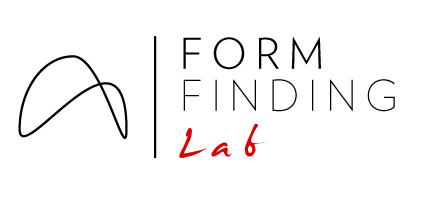

International Women Engineering Day: a celebration of inventors and innovators!

How will we live together?
Elias and Yousef Anastas most recent installation, All-purpose, was exhibited at the 17th International Architecture Exhibition – La Biennale di Venezia. Yousef is an architect, part of the AAU ANASTAS architecture studio with his brother, and an alumn of the Form Finding Lab.One of their previous works, the Qamt stone bench, was featured previously in this Form Finding Lab blog post. Now, with the All-purpose … Continue reading How will we live together?

Why civil engineering students should make things
In today’s Member Voices article, my co-instructor and visual artist, Joe Scanlan and I discuss the value of haptic learning for civil engineering students; why learning and working with their hands makes them better civil engineers. The American Society of Civil Engineer’s Future World Vision calls for creative and motivated students to be attracted to the civil engineering profession so that they can bring novel … Continue reading Why civil engineering students should make things

What is the future for shell design and construction?
Last Saturday (16th of January 2021), I had the great fortune of participating in a fascinating panel discussion about what the next trends are for shell design and construction with the structural and math wizard Chris Williams (Chalmers University) and the architectural engineer Philippe Block (ETHZ). The conversation was a bit provocative but actually also very insightful. If you missed it, you are in luck … Continue reading What is the future for shell design and construction?

Lace rod networks at the intersection of engineering and art
How can art inspire engineering systems? We have been working with bobbin lace and textile artists to find out. Our work is exhibited at the 2021 Joint Mathematics Meetings. Interlaced bigons from Lauren Dreier on Vimeo. Inspired by a traditional bobbin lace pattern, ‘torchon ground’, elastic strips are interlaced to create a gradient of out-of-plane behavior. The key structural element is a bigon which consists … Continue reading Lace rod networks at the intersection of engineering and art

Robots and humans collaborate to revolutionize architecture
Two Princeton researchers, architect Stefana Parascho and engineer Sigrid Adriaenssens, dreamed of using robots to simplify construction, even when building complex forms. “We want to use robots to build beautiful architecture more sustainably,” said Adriaenssens, an associate professor of civil and environmental engineering and the director of the Form Finding Lab. So the professors partnered with architecture and engineering firm Skidmore, Owings and Merrill (SOM) to create a striking and unique … Continue reading Robots and humans collaborate to revolutionize architecture

(On-Line) public speaking
Over the years, the research and teaching at the Form Finding Lab, has been disseminated through a wide range of video and audio material. I have collected some of it here. ART AND ENGINEERING: When dancers dynamically interacted with manmade nets in our choreographic piece “In*Tension” (Seattle, June 2019), the nets exhibited counterintuitive stiffness properties. They stiffened under increased dancer impact loading and this phenomenon … Continue reading (On-Line) public speaking

Double helix of masonry—we uncover the secret of Italian renaissance domes
The construction of the Florentine duomo by Filippo Brunelleschi has been an engineering marvel for more than 500 years, showcasing ancient techniques that still hold valuable insights for modern engineering. Until now, it has remained a mystery how the master goldsmith and sculptor managed to build the masterpiece that pushes the limits of what is possible to construct even with modern building technologies, and how the masters … Continue reading Double helix of masonry—we uncover the secret of Italian renaissance domes

What I am thinking: structural designer and poet Jun Sato
Jun Sato is Associate Professor at University of Tokyo / Visiting Professor at Stanford University / Chief Executive Engineer at Jun Sato Structural Engineers Co., Ltd.. He has developed transparent, lightweight and ductile structures with geometries of naturalness through his collaborations with architects such as Kengo Kuma, Riken Yamamoto, Toyo Ito, Sou Fujimoto and Junya Ishigami, and through workshops with students. He worked at Toshihiko … Continue reading What I am thinking: structural designer and poet Jun Sato

TRANSFORMATION AND GEOMETRY IN ANNE TYNG’s WORK
For years the graphic designer Stephanie Specht and I have wanted to collaborate on a project related to the architecture of Louis Kahn (1901-1974). This year, I was invited to a panel discussion on the work and design philosophy of Anne Tyng (1920-2011). Anne was an architect by training and had a deep interest in geometry (and in particular platonic solids). Anne collaborated with Louis … Continue reading TRANSFORMATION AND GEOMETRY IN ANNE TYNG’s WORK




